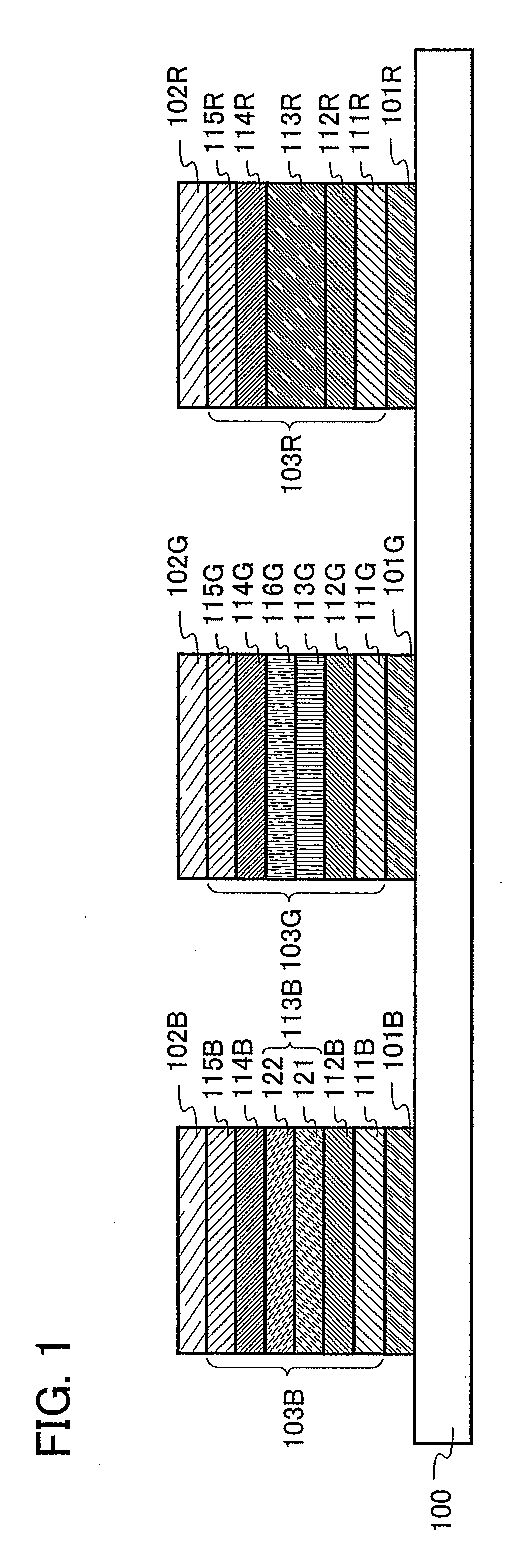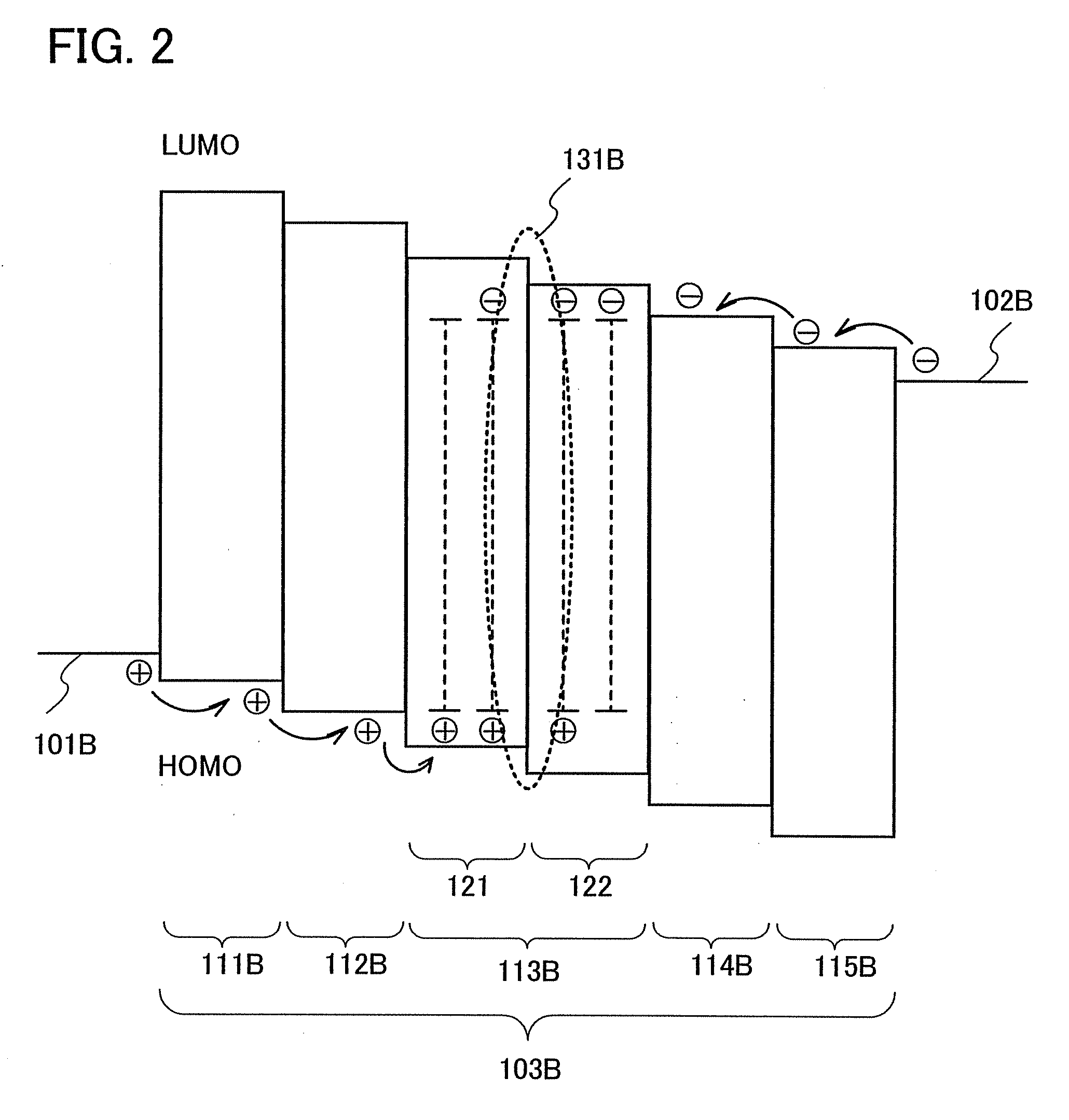Light-Emitting Device and Electronic Device
a technology of light-emitting devices and electronic devices, which is applied in the direction of discharge tubes/lamp details, organic semiconductor devices, discharge tubes/lamp details, etc., can solve the problems of difficult to obtain features and damage to the performance of display devices, and achieve excellent characteristics and excellent characteristics
- Summary
- Abstract
- Description
- Claims
- Application Information
AI Technical Summary
Benefits of technology
Problems solved by technology
Method used
Image
Examples
embodiment mode 1
[0101]One mode of a light-emitting device of the present invention will now be described with reference to FIG. 1.
[0102]A light-emitting device of the present invention includes a plurality of light-emitting elements that have an emission color which is different from each other. Each light-emitting element has a plurality of layers between a pair of electrodes. In this specification, the plurality of layers formed between the pair of electrodes are collectively referred to as an EL layer.
[0103]In FIG. 1, a substrate 100 is used as a support of the light-emitting element. The substrate 100 can be glass, plastic or the like, for example. Any material that can serve as a support of the light-emitting element can be used, in addition to the above materials.
[0104]In this embodiment mode, the light-emitting element includes a first electrode, a second electrode, and an EL layer provided between the first electrode and the second electrode. Note that description is made below, on the assu...
embodiment mode 2
[0219]Embodiment Mode 2 will specifically describe a structure of a pyrazine-based organometallic complex which can be used for a light-emitting device of the present invention.
[0220]The pyrazine-based organometallic complex is an organometallic complex which has a ligand having a pyrazine skeleton, and whose a central metal is an element belonging to Group 9 (Co, Rh, Ir) or an element belonging to Group 10 (Ni, Pd, Pt). Further, the organometallic complex should have a property of emitting phosphorescence.
[0221]Many of organometallic complexes belonging to Group 9 or 10 exhibit MLCT (Metal to Ligand Charge Transfer) transition. In particular, the triplet MLCT transition is often observed in phosphorescent compounds. The LUMO level of the organometallic complex exhibiting MLCT transition is determined by the rank of the LUMO level of a ligand. Thus, if a ligand having a high LUMO level is used, the LUMO level of the organometallic complex is also high, and if a ligand having a low L...
embodiment mode 3
[0237]An example of a cross sectional view of a light-emitting device formed according to the present invention will be described with reference to FIG. 9.
[0238]In FIG. 9, a region surrounded by a dashed line represents a transistor 911 which is provided for driving a light-emitting element 912 shown in Embodiment Mode 1. The light-emitting element 912, which is a light-emitting element of the present invention, comprises an EL layer 915 between a first electrode 913 and a second electrode 914. The EL layer 915 has the structure shown in Embodiment Mode 1. A drain of the transistor 911 and the first electrode 913 are electrically connected to each other by a wiring 917 which extends through a first interlayer insulating film 916 (916a, 916b and 916c). The light-emitting element 912 is isolated from other light-emitting elements provided adjacently to the light-emitting element 912 by a partition layer 918. The light-emitting device of the present invention having this structure is p...
PUM
 Login to View More
Login to View More Abstract
Description
Claims
Application Information
 Login to View More
Login to View More - R&D
- Intellectual Property
- Life Sciences
- Materials
- Tech Scout
- Unparalleled Data Quality
- Higher Quality Content
- 60% Fewer Hallucinations
Browse by: Latest US Patents, China's latest patents, Technical Efficacy Thesaurus, Application Domain, Technology Topic, Popular Technical Reports.
© 2025 PatSnap. All rights reserved.Legal|Privacy policy|Modern Slavery Act Transparency Statement|Sitemap|About US| Contact US: help@patsnap.com



